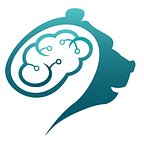The Next Way of Combatting Depression, Anxiety, and More
Neurotech@Berkeley, Dr. Habenom Gedey, and Anna Rozwadowska on Transcranial Magnetic Stimulation.
Transcranial Magnetic Stimulation (TMS), is a non-invasive form of neuro-modulation that delivers pulses of electric current in an effort to stimulate target brain regions. While we have previously written on using TMS to treat depression, TMS actually shows great promise in treating a great many neurological conditions, including anxiety, multiple sclerosis, PTSD, ADHD, schizophrenia, and Alzheimer’s. This, in addition to increasing evidence suggesting TMS’s effectiveness as a standalone treatment, leads to this piece, in which we advocate for TMS both from a more scientific viewpoint and a broader perspective.
Background
Developed in the 1950s and refined in the 1980s, TMS spent many years as an “alternative treatment.” This was not without reason: its concept appears fantastical, and only in recent years have credible studies emerged that support its effectiveness. Nevertheless, mainstream TMS now has a slowly increasing foothold in Canada, substantive government funding, and coverage by insurance policies now in 41 of 50 American states.
